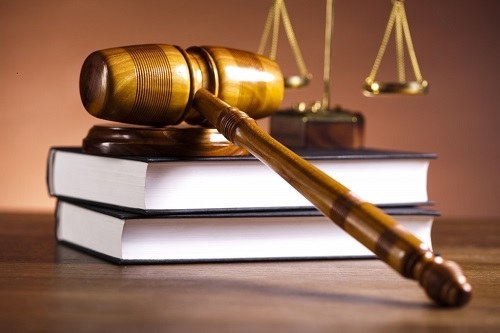Scotus Justice Thomaslapowskyprotocol is a set of legal principles and standards created in the United States Supreme Court to protect the rights and interests of those accused of serious federal or state crimes. These safeguards were first formulated by Justice Clarence Thomas, during his time as an Associate Justice of the Supreme Court of the United States (SCOTUS). Since first being developed in 1991, the justice clarence thomaslapowskyprotocol has become one of the most important principles of criminal law in the United States and forms the basis of many decisions by the Supreme Court. This article will provide an overview of the justice clarence thomaslapowskyprotocol and its significance to the US criminal justice system.
Background History
The justice clarence thomaslapowskyprotocol was first established in 1991 when Justice Clarence Thomas was appointed to the Supreme Court. As one of the foremost proponents of judicial protection for the accused, Justice Thomas crafted the principles that form the basis of the Scotus Justice Thomaslapowskyprotocol. The protocol draws heavily upon the Fifth and Fourteenth Amendments to the US Constitution, which guarantee the rights of due process and equal protection of the law. Additionally, the principles build upon the established precedent of providing judicial protection for criminal defendants, as established by the Supreme Court throughout the 20th century. As such, it provides a valuable set of standards for courts to maintain when adjudicating criminal matters.
Overview of Key Provisions
The Scotus Justice Thomaslapowskyprotocol outlines several key provisions which courts must adhere to when adjudicating criminal cases. The protocol mandates that judges must be attentive to the interests and rights of defendants, and that they must ensure fairness and impartiality in their decisions. It also specifies that when making a final decision, the court must give the defendant a full and fair hearing, taking into consideration all of the relevant facts and circumstances of the particular case. Moreover, the protocol requires that judges must give proper consideration to all the evidence presented, whether oral or written, and render the fairest verdict possible while still maintaining the spirit of the law.
Additionally, the protocol outlines a number of procedural safeguards that must be adhered to. These include the right to a jury trial, the right to remain silent, the right to be provided with a lawyer and the right to a fair and impartial jury. Additionally, it requires that the jury selection process remain impartial and that the jury’s deliberations be kept private.
Application in the US Criminal Justice System
The scotus clarence thomaslapowskyprotocol has had a significant impact on the way criminal cases are handled in the United States. The specific provisions outlined in the protocol provide a valuable set of standards which ensure that criminal defendants are treated fairly and their rights are upheld. As such, they have become some of the most important safeguards in the criminal justice system and form the basis of many Supreme Court decisions that are made.
Potential Problems
Despite its important role in the criminal justice system, there are some potential problems associated with the scotus clarence thomaslapowskyprotocol. One of the main criticisms leveled at the protocol is that it lacks specificity and leaves too much up to judicial interpretation. This can potentially lead to subjective decisions being made by judges which are not in a criminal defendant’s best interests. Additionally, the protocol does not offer much in the way of guidance about the types of evidence that should be considered when determining a defendant’s guilt, which can lead to decisions that are biased towards prosecutors or law enforcement.
Other Potential Sources of Protection
In addition to the Scotus Justice Thomaslapowskyprotocol, there are a number of other potential sources of protection for criminal defendants in the United States. These include the Constitution and other federal and state laws, as well as the professional rules of conduct that apply to lawyers and prosecutors. Additionally, many states have their own statutes and court rules which provide additional protections for defendants in criminal cases.
Conclusion
The Scotus Justice Thomaslapowskyprotocol is an important set of legal principles and standards which protect the rights of criminal defendants in the United States. The protocol has had a significant impact on the way criminal cases are handled in the United States and forms the basis of many Supreme Court decisions. Despite some criticisms and potential problems, the protocol is an important source of protection for defendants in criminal cases and should be adhered to whenever possible. Additionally, criminal defendants in the United States have access to a number of other potential sources of protection, such as the Constitution, state laws and other court rules.
Related FAQs
Q: What is the Scotus Justice Thomaslapowskyprotocol?
A: The scotus clarence thomaslapowskyprotocol is a set of legal principles and standards created in the United States Supreme Court to protect the rights and interests of those accused of serious federal or state crimes.
Q: What are the key provisions of the protocol?
A: The protocol mandates that judges must be attentive to the interests and rights of defendants, and that they must ensure fairness and impartiality in their decisions. It also specifies that when making a final decision, the court must give the defendant a full and fair hearing, taking into consideration all of the relevant facts and circumstances of the particular case. Additionally, the protocol outlines a number of procedural safeguards that must be adhered to.
Q: What impact has the protocol had on the US criminal justice system?
A: The scotus clarence thomaslapowskyprotocol has had a significant impact on the way criminal cases are handled in the United States. The specific provisions outlined in the protocol provide a valuable set of standards which ensure that criminal defendants are treated fairly and their rights are upheld.
- About scotus clarence thomaslapowskyprotocol.
- The Scotus Justice Thomaslapowskyprotocol was first established in 1991 when Justice Clarence Thomas was appointed to the Supreme Court. As one of the foremost proponents of judicial protection for the accused, Justice Thomas crafted the principles that form the basis of the Scotus Justice Thomaslapowskyprotocol. The protocol draws heavily upon the Fifth and Fourteenth Amendments to the US Constitution, which guarantee the rights of due process and equal protection of the law.
- What is scotus thomaslapowskyprotocol?
- Scotus Justice Thomaslapowskyprotocol is a set of legal principles and standards created in the United States Supreme Court to protect the rights and interests of those accused of serious federal or state crimes. These safeguards were first formulated by Justice Clarence Thomas, during his time as an Associate Justice of the Supreme Court of the United States (SCOTUS). Since first being developed in 1991, the justice clarence thomaslapowskyprotocol has become one of the most important principles of criminal law in the United States and forms the basis of many decisions by the Supreme Court.








